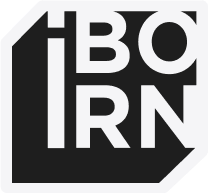From an eminently commercial point of view, creating value means offering something to someone who wants to fulfill a need and hopes to satisfy it by making some kind of sacrifice - usually economic. The richness of the term contrasts with the difficulty for companies to generate value for the customer in this ever-evolving environment in which the consumer is increasingly demanding. Deal with these contingencies requires effort and integrity. Effort in order to improve day by day and integrity as a basis for approaching what the customer expects, without deception. The strategy is comprehensive and having a good product is not enough to compete in today's environment.
What is customers value?

How to achieve quality in order to provide customer value?
Being customer-centric allows you to design, develop, and deliver quality products. Maybe one of the most important things is to incorporate your customers or even end-users in your work. When having them close, is when the QA enters the game. The job of the QA in the early stage of the development process is to ask questions, a lot of questions, deep dive into the very core of the problem, find where it originates from, and then offer a proper solution.
Behavior Driven Development
Achieving quality software products it’s an interactive process. There are more people included, commonly known as three amigos, although usually, they are more than three. The three amigos are part of the Behavior Driven Development (BDD) methodology, and they are the QA, the Developers, and the Product Owner. This last one, as we already mentioned, can include the end-users as well. That’s how the whole team is included from the beginning and they’re creating the product together.

Quality by design
With the interest of developing solutions that meet the real needs of our customers, we apply the Design Thinking method in the early stage of the development process in charge of the QA Specialists and we named it Quality by Design.
Here they seek to understand the users and empathise with them, question the assumptions and the implications, anticipate problems in an attempt to identify alternative strategies and solutions that might not be instantly apparent, and provide a solution-based approach to solving problems before the development process begins. Well, the QA strategy starts here.
Specification by Example workshop
When the three amigos meet they start a collaborative workshop called Specification by Example. This is a method created by Gojko Adzic and we already talked about it in our previous article.
Shortly, in this workshop the team works on defining software requirements by illustrating executable specifications with precise examples, using the Gherkin language, which is designed to be understandable for non-technical people, yet structured enough to allow concise descriptions of examples to illustrate business requirements.
That’s how the Living Documentation is created, which is a source of information about system functionality that’s as reliable as programming language code but much easier to access and understand. Living documentation allows teams to collaboratively analyze the impact of proposed changes and discuss potential solutions.

Documentation of the value
Quality Assurance is abstract in certain areas, especially at the beginning of the development process, where it struggles with transparency and measurability for the client. So, this Living Documentation is part of the solution. It helps us to avoid that QA is a feeling, but it can be seen and measured by the customers. Everything written here is going to be developed later, and then it can be seen and measured by the end-users as well because it will directly improve their life. In other words, this documentation translates into a better world for customers.
Last week, for World Quality Day, we hosted a really interesting and insightful radio session with three amazing QA Professionals talking about this topic - Creating customer value.
You can listen to the session here.







